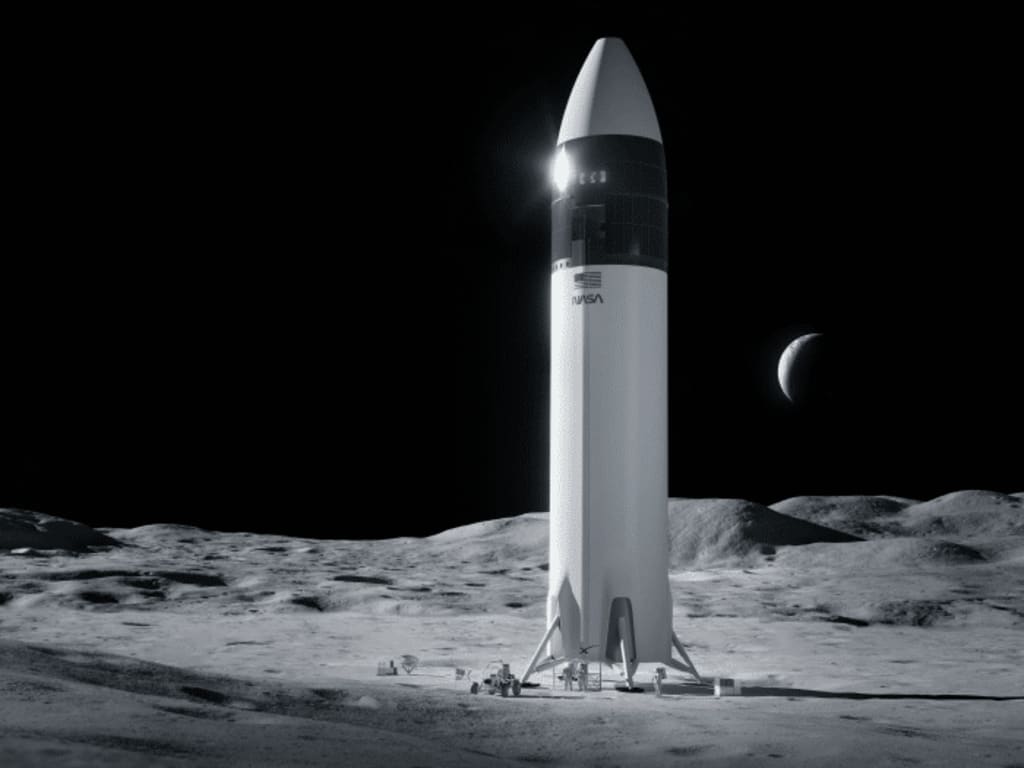
Starship Vertical Landing May 5, 2021, On the same day, SpaceX's Starship SN15 completed its test flight. After four successive explosive accidents during the high-altitude flight test landings of the Starship prototype, SN15 finally landed successfully and safely.
SpaceX SN15 starship high-altitude test on May 5, 2021.
The fifth test was certainly a lucky one. After four less-than-successful high-altitude test flights of the Starship prototype, SpaceX has now finally successfully launched and landed its newest prototype, Prototype 15 or SN15. The launch took place on May 5, 2021, at SpaceX's South Texas Proving Grounds. SpaceX describes Starship as a "fully reusable transportation system designed to transport people or cargo to Earth orbit, the Moon, Mars or beyond. NASA has selected this system as the implementer of its Artemis manned lunar program, which intends to put the first male, and the first female ever, on the moon within 10 years.
SpaceX CEO Elon Musk tweeted after the landing.
Starship rated for landing!
"Rated" is a space term generally used to describe a launch that turns out as expected.
The prototype underwent a series of tests last week. The high-altitude flight test was originally scheduled for April 30 but was postponed several times. Now the high-altitude tests have finally been completed. The final model will be composed together with a giant SpaceX rocket booster called "Super Heavy".
SN15 is the fifth Starship prototype to attempt such an ascent in less than five months. The first four - from SN8 to SN11 - flew well before reaching the end of their dramatic explosive flame show. SN10 did land in one piece, but eight minutes later there was a big explosion on the landing pad. SN11 launched a month ago on March 30, reached its lift limit as expected, and then exploded on landing due to a "plumbing problem" that SpaceX founder and CEO Elon Musk announced a week ago. CEO Elon Musk claimed a week ago. Essentially, this was due to excessive pressure caused by too much methane in the combustion chamber.
SpaceX has a reputation for getting better and better and has the money and resources to back up its next attempt at building a prototype. Starships and super-heavy boosters are immediately and completely reusable and can significantly reduce the cost of space flight, Elon Musk said.
Who would doubt that SpaceX expects its starship to be a big success or even create a new model of space flight? They expect the starship and super-heavy booster to be operational soon. The usual date for the full operation of the entire system is 2023. The stated goal of the Artemis program is a human return to the moon in 2024 - specifically, the south polar region of the moon - although many believe this goal is impossible to achieve.
Starship prototype SN15 undergoes cryogenic testing at the South Texas Proving Ground in April 2021. SN15 has undergone numerous upgrades to address the successive explosions of its predecessor's four prototypes over the past five months.
The Starship prototype rocket SN9 hit the ground and exploded during a high-altitude test flight on Feb. 2, 2021.
According to Elon Musk, the reason for the jump from SN11 directly to SN15 is that it was built at the same time as SN12, SN13, and SN14, but with significant improvements. Because of this, SpaceX engineers decided to go straight to SN15 instead of continuing to build SN12 through SN14, which was already behind. similar abandonment plans are expected to happen with SN18 and SN19. SN20 will likely take another series of major upgrades, and SpaceX's current ambitious goal is to send SN20 to Earth using a super-heavy booster by July. Orbit.
The first ignition test of SN15 took place three days after the launch of the manned space mission Crew-2, which was also SpaceX's second manned air mission to the International Space Station for NASA. The Falcon 9 rocket carrying the manned Dragon spacecraft lit up the predawn sky from the historic Launch Pad 39A at NASA's Kennedy Space Center in Florida and lifted off at 5:49 a.m. EDT (09:49 a.m. UTC). early April 24, the spacecraft successfully docked with the International Space Station.
Elon Musk never gives up.
Related Knowledge
SpaceX is an American aerospace equipment manufacturer and provider of space transportation services based in Hawthorne, California. SpaceX was founded by Elon Musk in 2002 to reduce the cost of space transportation to enable the future colonization of Mars. SpaceX has built the Falcon 9 and Heavy Falcon launch vehicles, and several rocket engines SpaceX built the Falcon 9 and Heavy Falcon launch vehicles, several rocket engines, the Dragon cargo ship, a manned spacecraft, and the Starlink communications satellite.
SpaceX's major achievements include the first privately funded liquid propulsion rocket to orbit the Earth (Falcon 1 in 2008), the first spacecraft successfully launched, orbited, and recovered by a private company (Dragon in 2010), the first spacecraft sent to the International Space Station by a private company (Dragon in 2012), the first vertical SpaceX has flown the Falcon 9 family of rockets hundreds of times.
SpaceX is developing a giant network of satellites called "Starlink" to provide commercial Internet services. SpaceX is also developing Starship, a privately funded, fully recyclable, and reusable system that will provide super-heavy lift capacity for interplanetary spaceflight. Once developed, Starship will be SpaceX's primary orbital vehicle to replace the existing Falcon 9, Heavy Falcon, and Dragon spacecraft. Starship will be fully reusable from its debut in the early 2020s and will have the largest payload capacity of any orbital rocket ever built.
About the Creator
Roseto
Science and civilization show that too much information sometimes gets in the way of knowledge and innovation。






Comments
There are no comments for this story
Be the first to respond and start the conversation.